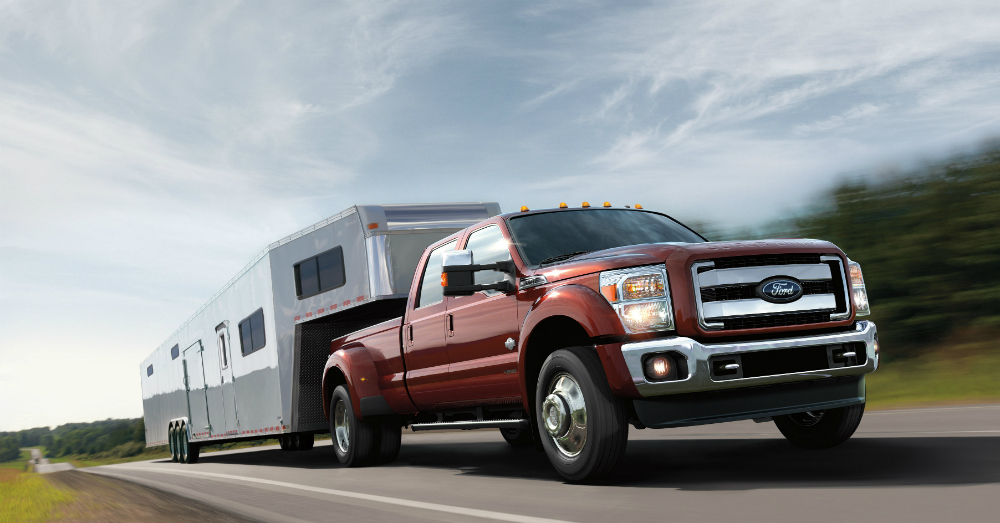If you’ve never pulled a trailer behind your truck the first time you do will be a serious adventure. Most of the adventure may come when you’re trying to put the trailer into a spot by backing in, unless you have a new trailering system that can do this automatically for you, and you’ll likely make a few mistakes along the way. Regardless of whether you’re trucking along in a Toyota Tacoma or a Ford Super Duty, ensuring you have the equipment for the road is one of the most important aspects of trailering and you need to make sure you know what you should and shouldn’t do along the way.
The Right Hitch – Not every truck is created equal and not every tongue is either. You need to make sure your hitch and ball setup are rated the same or higher than your truck so that you can easily tow the trailer you’re getting ready to pull. Make sure you take into account the weight of the load you’re going to put into the trailer in order to stay within your limits.
Cross the Chains – Crossing the chains gives you a place for the tongue of the trailer to land in case it becomes unhitched. You need to have the chains attached and crossed and make sure they aren’t dragging on the ground in order to have the safest ride possible. These chains act as a final safety device to help you avoid losing your trailer.
Wiring Harness – Check the harness and make sure you have yours attached properly. You’ll need to make sure all the lights are working on the truck and trailer before you head out in order to follow safety guidelines. Most of these harnesses are easy to install and you could spray the contacts with some dielectric grease to help prevent corrosion.
Check the Brake Battery – There is a small gel-cell battery in a trailer that helps to initiate stopping when an electric brake is used. This battery typically charges while the truck is running but you should check it before you head out, especially if the trailer has sat without being used for several weeks at a time.
Set the Tongue Weight – You need to have your load to the front of the trailer and at least forward of the wheels. The more weight you can put toward the bed of the truck the more stability you will have on the road. Trailers can act like a pendulum on the road when loaded in the rear and not in the front. Make sure you get about ten to twelve percent of the trailer weight as the tongue weight.
Set Up an Equalizing Hitch – This will help you have more of the weight one of the front axle of your truck. These bars that have to be made to the correct stiffness will help provide an even force and weight from the front to the back to give you the performance you want and help make your trailer steady on the road.
Set the Hitch Height – When you’re choosing your gear, a drawbar that has an adjustable height is a great investment if you’re going to pull a variety of trailers. This item will help you have the right height and keep your trailer level when on the road. If you don’t want to buy an adjustable drawbar, take the measurements needed to have the drawbar that will have the height you need.
Load it Up – Load up your trailer and take it to the scales to make sure your weights are within the limits of the trailer and your truck. You can also check the tongue weight while at the scales to see that you have a properly adjusted load. If you don’t, go ahead and make the adjustments needed so that you can ride with confidence.
Tires – Make sure your tires are inflated to the proper level. This should be the recommended cold pressure. With some trailers you want to be careful because smaller wheels will rotate more and cause the potential for overheating of the tires and wheel bearings. Make sure you have a proper spare on board just in case you run into trouble along the way.
Tie Downs – If you used tie downs to make sure your cargo is secure, you’ll want to check it along the way and make sure it stays tightly secured. No matter how well you tie them down these things will come loose and you’ll have to redo them and tighten them a bit. It’s a good idea to stop after about twenty or thirty miles to do this so you don’t lose any cargo.
For more information on how to pull a trailer safely, be sure to check out this guide on the DMV website.
This post may contain affiliate links. Meaning a commission is given should you decide to make a purchase through these links, at no cost to you. All products shown are researched and tested to give an accurate review for you.

